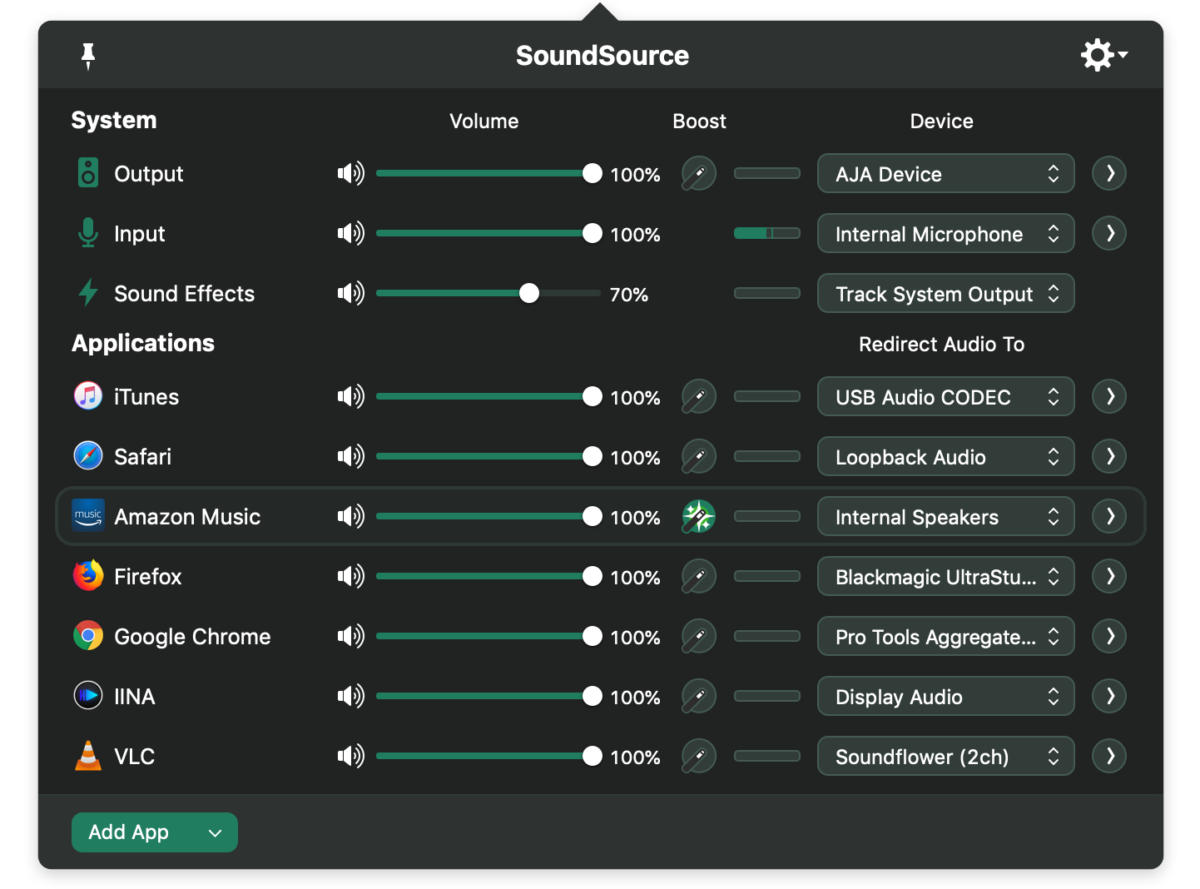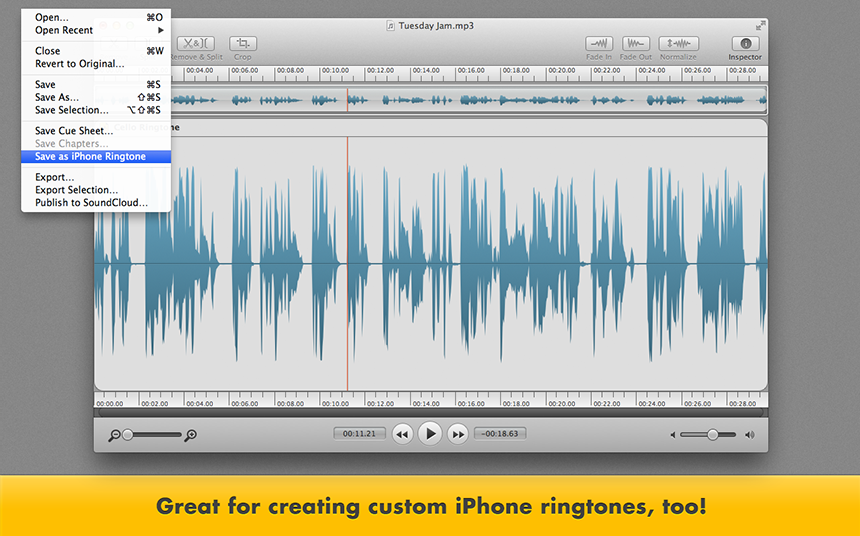Check out this list of 15 of the best audio and video editing apps available in the Mac App Store. The Mac has long been regarded as one of the best platforms for video and audio editing. Audacity (Win/Mac/Linux) Free and open source, Audacity makes audio editing simple and easy. If you want to record system audio, install Soundflower on your Mac. Most the following Mac Audio recorder allows you to change audio source. Down below, we have covered some of the best audio recording software for Mac that you can use. Read: 10+ Best Voice Recorder Apps For iPhone. Best Audio Recording Software for Mac 1.
- Audio Apps For Mac
- Free Audio Apps For Mac
- Game Applications For Mac
- Free Applications For Mac
- Audio Applications For Macbook Pro
Apple platforms provide a comprehensive set of audio frameworks and technologies that are essential to creating a rich app experience. Use them to immerse your users in multichannel audio with spatial rendering, process sound in realtime using AVAudioEngine, and engage the creativity of enthusiasts and professionals through Audio Unit Extensions.
Session Videos
Audio Apps For Mac

See the latest in audio technologies for Apple platforms presented at WWDC.
Playing Audio
Free Audio Apps For Mac
Play audio files in your apps with APIs such as Media Player and AVPlayer.
Audio Files and Format Conversion
Open, read, and write to audio files. Convert between different sample rates from your app.
Sample Code
Recording and Processing Audio
Record and process audio in real-time or offline with AVFoundation APIs.
Documentation
Sample Code
Core Audio
Use the Core Audio framework to interact with device’s audio hardware.
Performance
How to fine tune and achieve the best performance in your audio applications.
Audio Unit (AU) Plug-ins
Create audio effects, instruments, and utilities that can be used as a plug-in within other apps or hosted by digital audio workstations (DAW).

Documentation
Sample Code
MIDI
Communicate with MIDI (Musical Instrument Digital Interface) devices such as hardware keyboards and synthesizers.
Designing Audio Experiences
Whether sound is a primary aspect of your app’s experience or an embellishment, learn how people expect sound to behave and meet those expectations.
Privacy, Code Signing, and Notarization
Follow the latest Apple privacy and security standards with your Mac apps and extensions.
One area where Windows has been leaps and bounds ahead of the Mac for years, if not decades, is volume control. Quite simply, sometimes you need to control volume on a finer level than OS X allows. Windows lets you adjust output volume for each individual application, but this isn’t possible natively on a Mac.
So we have to turn to third-party apps to grant us this ability. Both apps on this list offer the feature of adjusting volume by app. However, the apps each bring something different to the table, so explore the options and decide for yourself which is best.
Volume Mixer
Volume Mixer is the first Mac app on the list and it allows you to control system volume by application. The app sits in your menu bar so you can call it up as needed. Each app, much like on Windows, is accompanied by its own volume slider. Adjust it as you’d like, mute individual apps entirely or click Refresh to bring an app on par with the master volume.
Over in the Preferences, you can choose your default output source or just quickly change sources on the fly. You can also set highly convenient keyboard shortcuts for specific actions revolving around volume control. These include increasing the volume of an active app, decreasing the volume of an active app, toggling mute for an active app, increasing/decreasing/muting background sound and increasing/decreasing/muting notifications. If you want full control over your output audio, it doesn’t get much better than this.

Volume Mixer comes with a free seven day trial after which it’s $9.99 for two copies or $14.99 for lifetime updates. It’s fairly steep pricing, but if you need the features, it works great.
Background Music
Background Music is a simpler app that does much of the same thing as Volume Mixer. From your menu bar, you can adjust volume for individual applications. But in Background Music, the volume sliders aren’t relative to your master volume. Each slider by default is set to the middle and doesn’t change when you raise or lower your volume. That means that technically, if you have your volume all the way up, you could still give some apps a slight boost.
It also has a phenomenal feature that auto-pauses your music when another source of audio starts playing, then automatically continues playback when the other audio stops. It’s much like how music stops and resumes when you get a phone call on your iPhone. The auto-pause feature supports iTunes, Spotify, VOX and VLC.
Background Music is free, unlike Volume Mixer, but since the developer hasn’t officially published it anywhere, it must be installed from GitHub.
Note: The guide to installing Background Music is right on the GitHub page. If you have Xcode installed, just copy and paste the provided prompt into Terminal.
To manually install, download the ZIP file and unzip it. In Terminal, type cd followed by the path to where you unzipped the folder. Then install by typing /bin/bash build_and_install.sh.
Game Applications For Mac

Free Applications For Mac
ALSO SEE:How to Live Monitor Your Microphone Input on Mac
Audio Applications For Macbook Pro
The above article may contain affiliate links which help support Guiding Tech. However, it does not affect our editorial integrity. The content remains unbiased and authentic.Also See#audio #musicDid You Know
In November 2017, an Amazon Echo device in Germany started playing music on its own at two in the morning.
